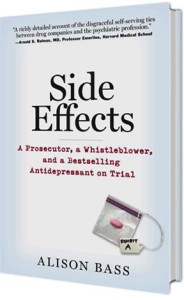The current issue of the New England Journal of Medicine contains a thoughtful essay about who owns federally funded research: the universities who receive the funding or the private companies who contract with academic researchers to develop a specific innovation for commercial use. The two authors, who are affiliated with Harvard Medical School and the consulting firm McKinsey, discuss a recent Supreme Court ruling that decided that a private company (Roche Molecular) had superior rights to a commonly used diagnostic test for HIV over a university (Stanford), even though the test was developed at Stanford by a scientist using federal research funds.
As the authors of the NEJM piece note, the Supreme Court ruling essentially contravened a common interpretation of the seminal 1980 Bayh-Dole Act, which opened the door for nonprofit universities and medical schools to patent the results of publicly funded research and license them to the highest bidder. In June, the authors say, the current Supreme Court decided that Bayh-Dole:
“does not give universities primary claim to federally funded inventions patented by members of their faculties. Rather, writing for a seven-to-two majority, Chief Justice John Roberts noted that since the original Patent Act of 1790, the inventor has always held the primary position.”
Why is this so disturbing? Because it will only exacerbate a problematic trend. Even though the Bayh-Dole Act stipulated that products developed from the partnership between academia and industry must be made available to the public “under reasonable terms,” this provision is almost universally ignored today, in large part because universities that license their research to industry have no control over the prices companies set.
As Dr. Marcia Angell, former editor of the New England Journal of Medicine and author of The Truth about Drug Companies, noted in a recent interview, taxpayers end up paying twice as a result. “They pay for the research and then they pay for drugs that cost an exorbitant amount,” she says.
And indeed, the authors of the NEJM essay acknowledge this problem. They suggest two remedies: one, that a legislative amendment to Bayh-Dole be enacted to make clear that the fruits of federally funded research belong to universities that receive the funds, not to the companies who contract with individual academic researchers. And two, that “universities should reexamine and perhaps revamp their licensing practices to ensure that they are indeed acting as stewards of the public good, rather than simply seeking to maximize their own licensing revenues.”
In other words, universities — being the primary beneficiaries of federal research funds — should start looking out for the taxpaying Americans who provide all that largesse.



The cost of drugs such as Embrel and remicade are prime examples of why the Bayh/Dole law should be changed. It is disgusting that Embrel cost nearly $2000.00/month for someone who suffers from Rheumatoid Arthritis and Psoriasis–like me. I simply can not afford the treatment, and try other drugs, which have little effect. I will not put my family in poverty, just to use a medicine to stop my pain and suffering. Embrel was developed at the Univ of Texas, and the price abuse is a result of Bayh/Dole protections.